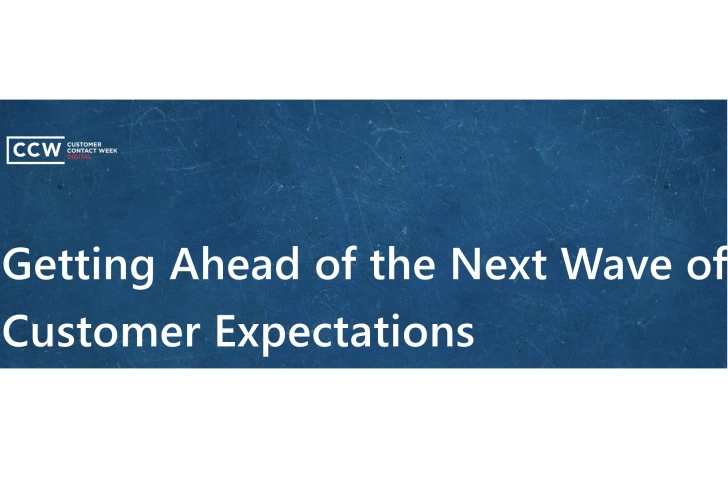Three Years Later: How The COVID Pandemic Changed The Way We Approach—And View—Customer Service
From remote work to digital-first, the CX space is still adapting to the pandemic's impact
Add bookmark
For many employees in the U.S., the week of March 13 marks exactly three years since we were suddenly forced to adapt to the digital, socially distanced way of life that we know now. Companies, restaurants and schools prepared for a brief two week shutdown as hospitals, urgent care centers and grocery stores hunkered down for what would then become an incessant influx of people, problems and PPE. As essential workers settled into their roles in protecting and caring for our society, businesses were tasked with adapting to a “new normal” and learning how to open back up—remotely, in-person or online. Those who were unable to do so risked permanent closure or felt the pain of the Great Resignation. The last three years have since become an ongoing exercise in community care, resilience, education and ingenuity. And despite all that we have learned and how much many of us adapted, we aren't out of the woods yet: more than 300 Americans are dying from COVID each day. There are still needs for social distance, sanitizing, masking, and hybrid work, especially for those who are at a high risk for contracting the Coronavirus.
In the customer contact world we've experienced a rapid transformation towards a digital-first mindset and experienced the pressure that limited access to brick-and-mortar puts on an industry focused on—and comprised of—people. While many organizations and companies worked to build new systems and technologies that supported customer care agents and improved customer service amid high communication volumes, they also had to reconcile with the psychological and mental impact that a years-long global crisis has had on everyone. The way that we work, live, shop and interact within the customer experience space drastically shifted throughout the pandemic and will continue to do so as long as we live in a world where COVID-19 was not just the quick blip on the radar that we all hoped it was. There is a lot to learn, and a lot more still that will become of CX in our COVID-conscious world. Here are just some of the takeaways we have for companies and customers moving forward from March of 2020:
The Customer Experience Is Directly Correlated To The Human Experience
Whether you’re a customer calling with a complaint, a caregiver for an older relative in line for the pharmacy, or a working parent trying to build your work schedule around a child’s hybrid schooling session, you’ve had your share of emotional struggles during the pandemic. Over the years, there surely have been experiences in your life that have impacted your ability to be polite in a phone call, have patience in an email thread, or even have compassion when somebody else expresses pandemic fatigue, depression, isolation or burnout. Living in a prolonged period of uncertainty and sudden change has a lasting influence on the emotional safety individuals experience day-to-day, and if the environment surrounding us is chaotic then it’s no wonder that our CX has felt chaotic as well.
A drop in customer satisfaction or an increase in call volumes run in parallel to the grief and pressure many people have been feeling--in and outside of the call center. The customer who emailed to return a birthday gift for a family member who passed from COVID, when met with a customer service agent who has been overworked while their coworkers are out sick with the virus, will meet for an exchange centered in fatigue, sadness and general dissatisfaction. By no fault of any person, what might have been a routine return becomes a customer interaction loaded with complication.
Without A Contingency Plan, What Customers Want Won’t Be What Agents Can Deliver
Throughout the past three years demand for everything from masks to food delivery service has exponentially expanded. The workforce, however, has not necessarily followed suit. The demand for quick, accurate service versus the supply of employees providing customer service was so unevenly distributed that even when companies wanted to meet employee needs they had to publicly announce in emails, chats and calls that they had high call volumes and could not meet demands. You personally have likely been met with such emails over the years, and had to reconcile with sub-par service. While, yes, the Coronavirus should not be an excuse for poor customer service, it created a steep learning curve that is still taking organizations some time to catch up to.
At the same time that customers were learning the parks and joys of digital for shopping, communication and learning, organizations were learning their limits and at times misinforming their consumer base of their company capabilities to meet pandemic demands. A cardinal role of CX is don’t promise what you can’t deliver, but in March of 2020 few brands actually knew what they could and couldn’t provide in the middle of an unprecedented global crisis. Social channels, phone lines, email inboxes, and chat boxes were backed up beyond repair. Many failed and failed until they got it right, and other companies cracked under the unrelenting wave of customers coming from all directions.
However, if all organizations adopt a “shelter-in-place” plan of sorts that details how to continue operations under extenuating circumstances, they can be prepared to pivot at any moment. A workforce that is knowledgeable and confident CX, and knows how to work around or with high demand, will be met with more patient customers who can recognize the efforts (and even limitations) that a pandemic places on businesses. Making something as small as Zoom calls or as large as remote hiring commonplace in the workplace prior to 2019 could have elevated some of the stress companies faced later on in the pandemic. But because few organizations were prepared for the length and severity of COVID-19, their SOP could not account for such an emergency and their products and services suffered.
Knowing what we know now about the Coronavirus and the impact a pandemic has on society, economy, technology and health, we can all move forward knowing what changes, tips and tricks can help us work through a global crisis.
Digital Technology Can Only Help Agents So Much--Mental Health Support Is Critical
Today’s customer care is much more connected than it was three years ago: chatbots, social media, phone, email, video, the metaverse, AI, VR, ChatGPT... Options for customer contact communication are in abundance, and the pandemic has been an opportunity to put these tools into overdrive and see just how well they can transform the customer experience. Organizations can meet customers where they are, allow users to self-service and utilize the information collected across platforms to better inform current and future interactions. Customers can now be even more selective in terms of what organizations they purchase from and what products they invest their time and money into. Employees can increase creativity and problem solving skills, find better work/life harmony and work more flexibly from anywhere thanks to how successfully some of these digital components have helped their CX grow over the past three years.
While technology has allowed for companies to prove the capacity of their employees to work from anywhere and operate omnichannel, it hasn't been smooth sailing to get to that point. Adapting these new ways of work out of necessity, as opposed to through proper education, takes a toll on the CX workforce. Since the beginning of the pandemic employees across industries have expressed high rates of overwork, less opportunities for interpersonal connection with coworkers or bosses, and more difficulty navigating different systems while also adopting new ways of work. For some companies, going too omnichannel too quickly and without proper training added additional stress to employees’ workload, causing some to leave the field of customer contact altogether.
In those moments executive leaders and management who may not deal with customers directly on a daily basis have learned the hard way that providing emotional support, as well as professional support is key to seeing their teams find success when using and learning new tools. Having insight as to what a day in the life of a CX employee entails and what tools work best based on their workflow will show teams that leadership have a true understanding of what they need. When employees know that they can express their feelings, ideas, concerns and needs with their team, they feel more supported in the workplace, valued as key players and motivated to provide good services even in moments where customers may present them with difficult circumstances.
Transparency And Communication Are Key To The Future Of Customer Contact
Conversations surrounding customer expectations and employee experience have been paramount to the digital transformation. The beginning of the 2020s was a rude awakening for companies that assumed they understood the needs of their market and their workers. As it turns out, many employees felt (and some continue to feel) discomfort around the idea of sharing their personal or professional struggles with their boss or colleagues. For fear of being viewed as incompetent or incapable of handling a robust workload, over the course of the pandemic some have quietly suffered through the overwhelm, while others still hit a breaking point and left their positions on less than desirable terms.
Oftentimes, managers don’t know that employees are struggling until their performance begins to wane. In the CX space, this can look like less collaboration and idea sharing during in-person or Zoom meetings, difficulty working in omnichannel, and failure to provide up-to-snuff customer service. Agents particularly are already far removed from the C-Suite and executive functions of their company, either physically by department location, or logistically by their not being included in important conversations on development and team workflow. When they fear speaking up at work, the distance between them and leadership grows. In turn, managers fail to support remote teams, don’t choose technology that truly supports their organizational needs, and find themselves with teams that consistently miss the mark. As a result, companies lose good employees, opportunities for growth, and money on tools and programs that simply don’t work for their workforce.
In reality, the signs that employees—or managers—are struggling in the contact center are more obvious than downed performance numbers. Changes in attitude, engagement and energy are all tell-tale signs that something is wrong. But when managers don’t know how to meet an employee in crisis and employees don’t truly feel like they can discuss issues with their boss without awkward conversations, false pleasantries, backlash, or a true commitment to supporting them, everybody gets the short end of the stick. In the same way that organizations provide training, seminars and classes on how to improve service and master omnichannel in the workplace, they must also provide open spaces and resources for genuine discussion and emotional support in the office or online.
What We Learned Will Shape What We Do In The Contact Center
Though we aren’t out of the woods yet when it comes to COVID-19, we now have the wherewithal to shift priorities in the event that we face another global lockdown. Managers and executives better understand what working under COVID conditions looks like for themselves and their employees. Organizations have committed themselves to providing quality service not just to their consumer market, but the individuals and teams that make their operations possible. Customers recognize, for better or worse, that corporate entities were just as unprepared as they were to suddenly live in a hybrid world. Although they’re aware of how their own emotional state impacts the customer service experience, they know agents are as well and now hold brands to a higher standard. Both parties understand that they play a role in what customer experience becomes in times of crisis, and can make smarter decisions when it comes to customer engagement and the employee experience. And while we may not know what the next three years hold, we do know that we can hold each other accountable.























